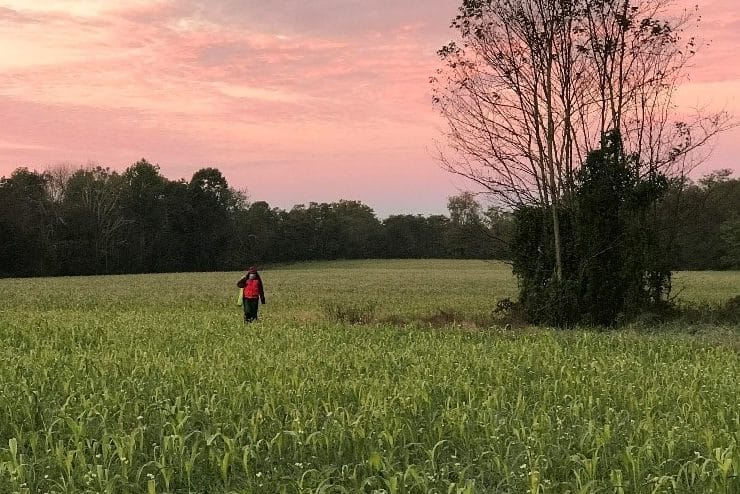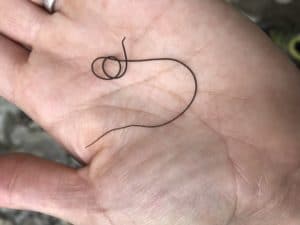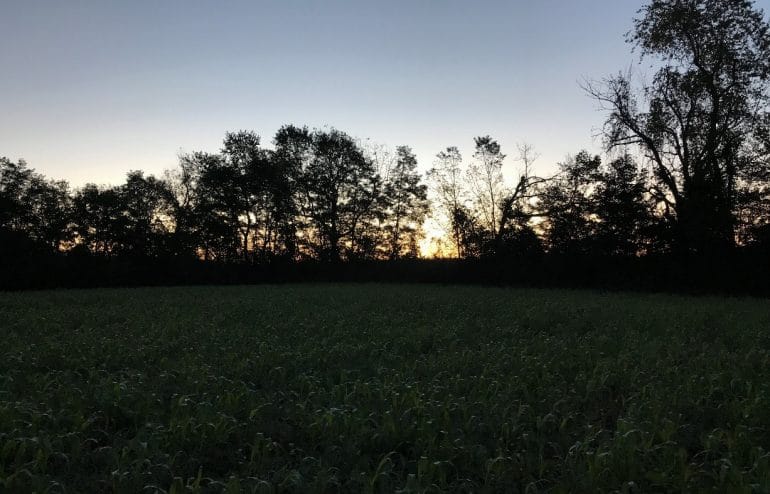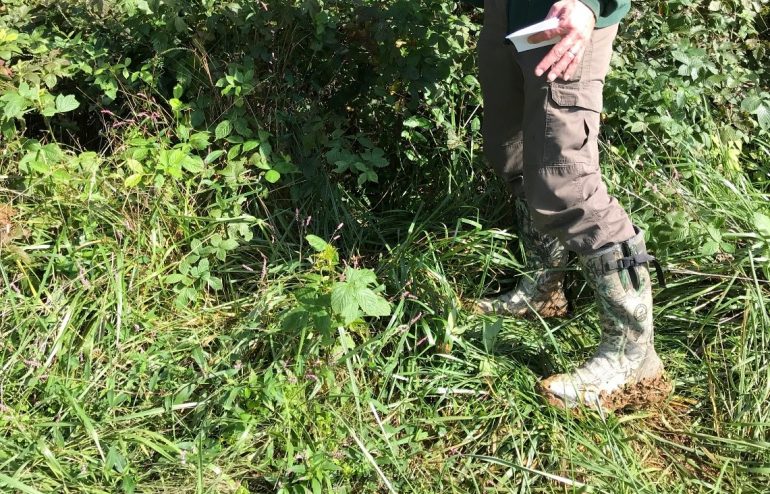The past week has been a little busy in Indian Hill so we finally got a chance to do our third and final covey call count today. It sounds like the coveys are located around one specific area so this time I didn’t want to take any chances and not hear them. Jennifer and I split up again but stayed within sight of one another (once the sun came up) so we were both in the area where the quail were heard the first and second time. Finally I heard it! The covey call that had been eluding me the first two trips was just south of where I was sitting. After the sun came up Jennifer and I both agreed on the direction that I heard the sound, however she also heard one to the northeast of where we were. We thought we would try flushing the birds to try to see if we could get a count so we headed toward the edges of the field. We had no luck getting the birds to flush out of their coveys but we both feel pretty confident that we at least have some quail walking about the Lewis Township property. Now the goal is to see if we can increase our quail populations through improved habitat establishment and quail-beneficial management practices. Call counts and quail monitoring will be an ongoing practice for our research team. We are already looking forward to some early chilly mornings next October.
There’s something about long, thin worms that puts people on edge. Even I hesitated to pick up this little guy because of the fear of parasitic worms. Don’t worry, these horsehair worms (Gordius robustus) are not some parasitic nematode ready to crawl up your nose and take over your body. Well actually, I should clarify. You’re safe if you are a human. Even your pets are safe. However, if you’re an arthropod, you might be in trouble. The mature adults (like you see in the picture) aren’t the ones causing problems. It’s the babies you have to look out for, and you won’t even see them coming!
Adult females lay MILLIONS of eggs in the water. The minuscule (~0.01 inches) larvae are ingested by certain bugs for food. A hard covering (cyst) protects the larva, then dissolves after entering the gut of its host. Many macroinvertebrates become hosts because they live in aquatic habitats. Other common hosts are crickets, grasshoppers, and beetles because they eat macroinvertebrates, thus becoming the new host to the horsehair worm. As a horsehair worm develops into an adult over a few weeks or months, the host becomes the ‘walking dead’. Because adult horsehair worms require water to leave their host, the zombie host bug is triggered to find water, where it meets its demise. Most of us have seen witches melting from water in the Wizard of Oz, but here’s a new visual for you: death by worm breaking through a body cavity. And if you really want a good visual, search for horsehair worms on youtube. You’ll find all sorts of videos of them crawling out of crickets, spiders, cockroaches, and other arthropods. Maybe save it for Halloween.
One legend behind their name is that people believed the hairs from a horse’s mane or tail would fall into the water bucket and come to life. In reality, a cricket or host had hopped up to the water bucket, prompting a horsehair worm to break free in the water source. They are also referred to as Gordian worms because they twist and squirm into ‘Gordian knots’. In addition to having a very remarkable life cycle, horsehair worms are important for keeping our pest population in check. I encourage you to go on a hike and keep an eye out for any strange behavior from arthropods around water.
~Tracy




